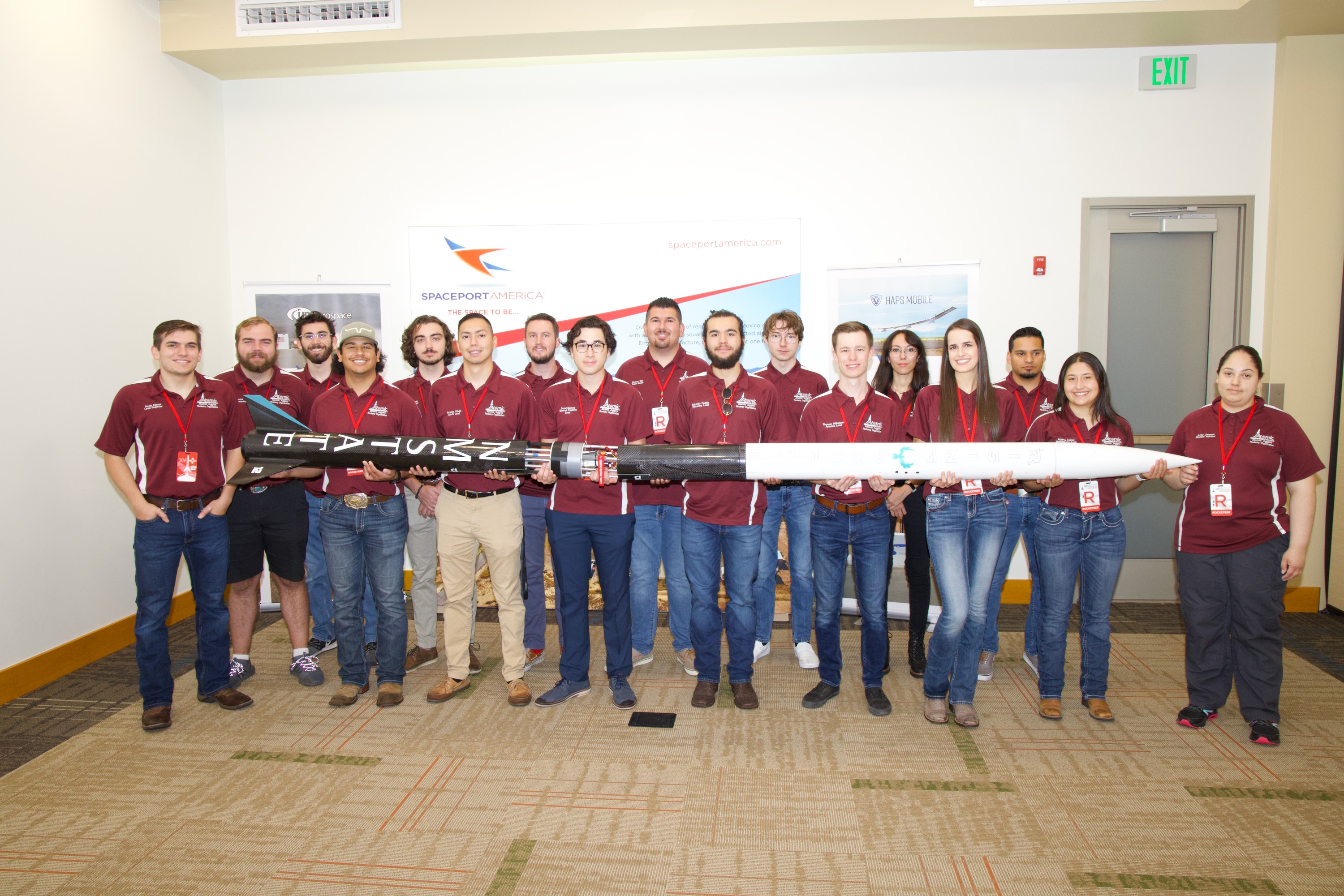
New Mexico’s monsoons hampered the Spaceport America Cup Intercollegiate Rocket Competition held June 21-25, but they didn’t alter the performance of New Mexico State University’s Atomic Aggies. The team won the coveted 2022 Chile Cup—a competition amongst local rivals NMSU, New Mexico Tech, the University of Texas at El Paso and the University of New Mexico.
Along with the Chile Cup, the team placed well in several other categories, missing top scores by a handful of points.
“I can confidently say that the Atomic Aggies are one of the best rocketry groups in the world. Our performance is a testament to that,” said Scott Komar, 2021-22 lead engineer and spring graduate of mechanical engineering.
“Our rocket performed beyond my expectations,” said Ricardo Olivas, 2022-23 lead engineer and mechanical and aerospace engineering student.
An estimated 1,300 students and faculty gathered hailing from 95 institutions from 16 countries for the fourth annual Spaceport America Cup, the world’s largest intercollegiate rocket engineering conference and competition. The Spaceport America Cup was canceled in 2020 due to the COVID-19 pandemic, and the competition was held virtually last year. This year, the annual competition, which began in 2017, was held in-person at Spaceport America in southern New Mexico.
“We were competing in the 10,000-foot category and our rocket got to 10,138 feet, which is pretty close when you are talking that distance. And our payload performed well, too. Nothing was damaged and the recovery went great,” Olivas said.
“It wasn’t just a simple rocket launch either, when looking at how our rocket compared to other teams it really shows how complicated our vehicles have gotten,” Komar said. “This year’s rocket was able to successfully launch and reach stable ascend, deploy an airbrake system, deploy its parachute recovery system via C02 canisters to reach a safe descent velocity, jettison the nosecone, and deploy an internally stored glider system …most other groups used a parachute system for their deployable payloads.”
All rockets are required to have a payload weighing at least 8.8 pounds. The Atomic Aggies took a novel approach: their payload was a glider.
“Typically, Virgin Galactic uses an airplane to deploy their spaceship, we decided to flip that and use a rocket to deploy a glider,” Olivas said.
Among other things, the teams are judged on their project’s flight performance during launches at the Spaceport America Cup, demonstrated by altitude achieved relative to the target altitude (in NMSU’s case 10,000-feet) and successful recovery of the rocket and payload. The retrieved rocket and payload are judged on the ability to be successfully relaunched.
The rockets are equipped with GPS tracking devices to assist with vehicle recovery. Also onboard is a barometric pressure altimeter with data storage which provides the official log of apogee for scoring.
“I am very excited and proud of the team’s performance this year,” said Associate Professor Fangjun Shu, faculty adviser of Atomic Aggies. “They designed, built and tested the rocket and the payload glider all by themselves. And it has been proved to be a great one. I am sure they will continue to excel next year.”
The teams also provide three progress reports before the competition, a final technical report and a poster display for the conference portion of the event.
Aside from competition, Olivas said it’s all about sportsmanship and comradery.
“We got to know a Canadian team pretty well. They needed a new battery and that was shipped to me. Several other teams visited our shop and we helped them with parts. We want to be welcoming to everyone who comes and make them feel comfortable,” Olivas said.
The Atomic Aggies regularly extend that hospitality to youngsters, hoping to get them hooked on rocketry and engineering.
“We give lots of talks to high school students,” Olivas said. “It’s so great to see the look on their faces when we show them our rockets. We really want to be good representatives for the college and our program.”
Olivas and Kumar worked with approximately 40 members of the Atomic Aggies group for a full year to complete their rocket named Rising Phoenix.
“We’ll rest for a couple of weeks and start working on next year’s rocket,” Olivas said.
“We want to expand our membership to other engineering disciplines, like electrical. There are a lot of electrical components involved and we could really use their expertise. We would also like to expand beyond engineering to any other majors, like business. People in marketing could really help us get the word out and help with fundraising. …It takes over $15,000 annually to fund the project,” Olivas said.
The final scores and details for all teams can be found at https://www.soundingrocket.org/2022-sa-cup---15th-anniversary.html.


